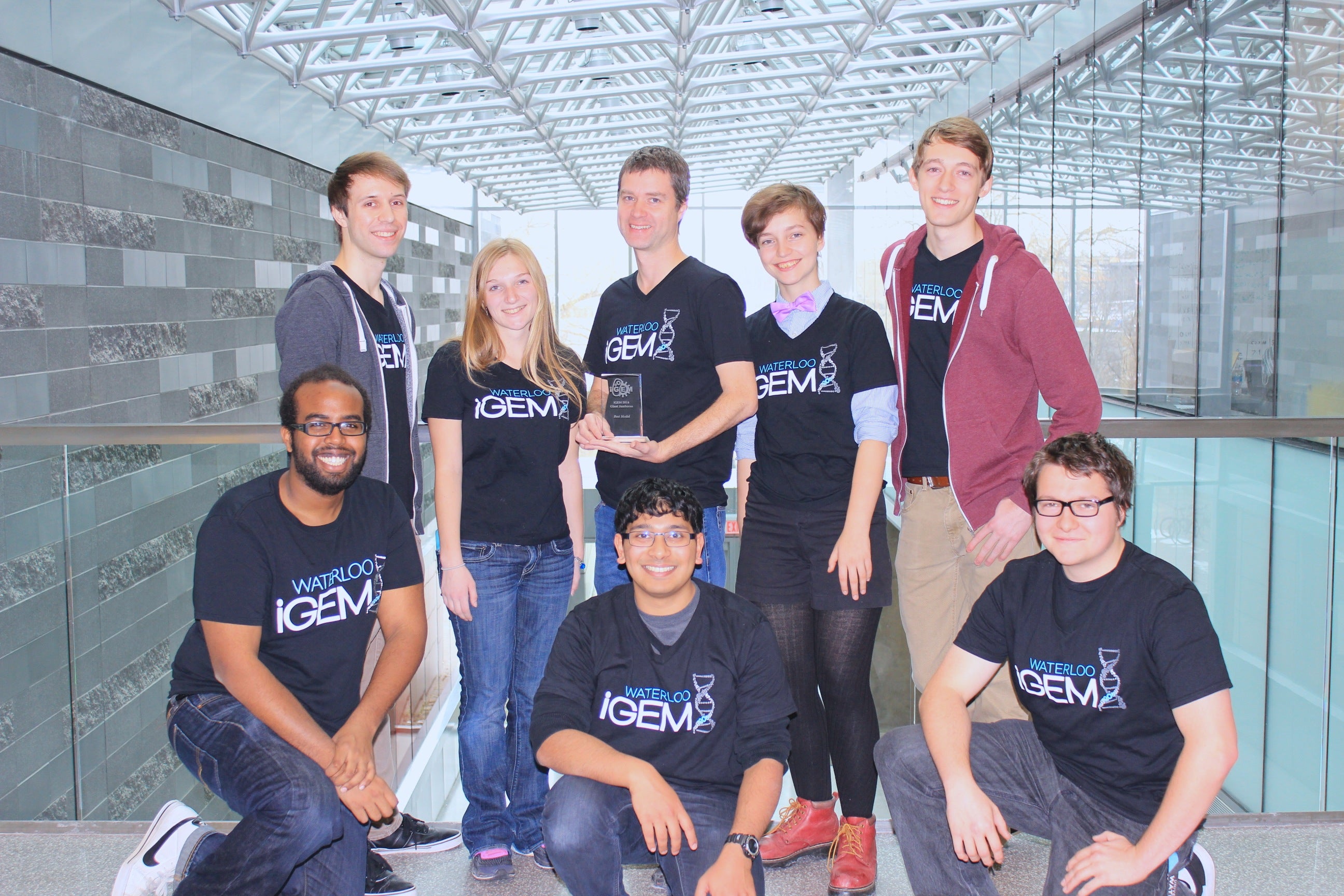The Waterloo International Genetically Engineered Machine (iGEM) team, composed of students from the Faculties of Mathematics, Engineering, Science, and Applied Health Sciences, won a gold medal for designing Staphylocide. Staphylocide is a synthetic bacterium that is designed to turn off the antibiotic-resistance gene in Methicillin-Resistant Staphylococcus Aureus (MRSA), making it responsive to treatment again. The students presented their work at the recent International iGEM competition Giant Jamboree in Boston.
In addition to winning gold, the team took the prize for best model for their use of mathematical models and computer simulations that describe the structures and systems they used to complete Staphylocide.
The interdisciplinary Math Modeling Team includes 12 undergraduate students supervised by faculty instructor Brian Ingalls.

Some
members
of
the
2014
Mathematical
Modelling
team.
Top
row
(left-right):
Matthew Smart
(3B
Mathematical
Physics),
Samantha
Hirniak
(3A
Mathematical
Physics),
Brian
Ingalls
(faculty
advisor),
Tessa
Alexanian
(4A
Systems
Design
Engineering),
and
James
Hawley
(3B
Mathematical
Physics)
Bottom
row
(left-right):
Jama
Hagi-Yusuf
(Biology),
Rollen
D'Souza
(3B Software
Engineering/Applied
Mathematics),
and
Jeff
Barrett
(Mathematics/Kinesiology,
BSc)
3A Mathematical Physics student, Samantha Hirniak explained that bringing the trophy for best model, out of 245 teams from 225 universities and 32 countries, was the the highlight of the year.
"Building models that have an impact on research and using mathematics to solve critical biological problems is exciting," said Hirniak.
The 2014 project was divided into three phases. First, the team conducted a series of lab experiments to find the best way to silence the resistance gene in MRSA. Then, they looked for ways to deliver the gene into their synthetic bacterium. Finally, they explored methods to translate their idea into an antibiotic resistance ointment for patients.
“It’s exciting to be able to apply what I’ve learned in my math and physics courses to an evolving field like synthetic biology, where there is a need for more quantification and predictability through modeling," said 3B Mathematical Physics student Matthew Smart.
The group won a gold medal and the award for best poster at the North American regionals last year.